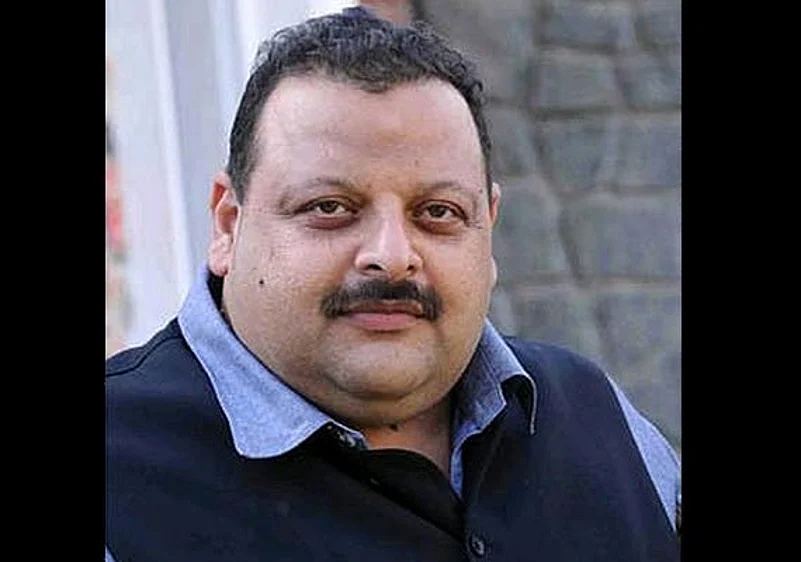For years, no one has heard of the Dixon plan in J&K. Even between 2004 and 2006, during intense back-channel talks between the Manmohan Singh government and president Pervez Musharraf, optimists talked about the four-point formula to resolve Kashmir, but not about the Dixon Plan.
Sir Owen Dixon, the U.N. Representative who came to the subcontinent pursuant to the Security Council's 1950 resolution on the Kashmir dispute, is a well-known name in political and intellectual circles of Kashmir. His ‘Dixon Plan’ is still talked about. It assigned Ladakh to India, the Northern Areas and Pakistan-Occupied Kashmir (POK) to Pakistan, split Jammu between the two and envisaged a plebiscite in the Kashmir Valley.
Advertisement
Now, all of a sudden, Davinder Singh Rana, former Jammu National Conference president who has joined the BJP recently, has started talking about it. Rana is the brother Minister of State in PMO Jitendra Singh. That makes Rana's Dixon Plan talk important. In June this year, Rana came up with an idea for having a Jammu Declaration--a voice from Jammu for an inclusive Jammu & Kashmir. He says it will be a roadmap to defeat votaries of the Dixon Plan, who want to divide the Jammu region on the basis of religion. On September 25 this year, Rana, still in the NC, told a gathering at Kalkote, Jammu, that he will defeat proponents of the Dixon Plan by maintaining the religious-regional unity of Jammu and Kashmir.
Advertisement
“Jammu Declaration, a voice of Jammu by Jammu for inclusive J&K, will come with a roadmap to defeat the votaries of the Dixon Plan who want to divide Jammu region on the basis of religion”, Rana told the gathering.
On October 11, Rana joined the BJP in presence of his brother and other BJP leaders in a ceremony in New Delhi. Surprisingly, Rana, who was a key aide and advisor of former Jammu and Kashmir chief minister and National Conference leader Omar Abdullah, again talked about the Dixon Plan during the joining ceremony.
“I pitched for a Jammu Declaration, which will be a voice of Jammu by Jammu for inclusive Jammu and Kashmir. It will defeat the votaries of the Dixon Plan who want to divide the Jammu region on the basis of religion,” Rana repeated. “Time has come to have a Jammu narrative, a political narrative, after all it was the Dogras, it was Maharaja Gulab Singh, who carved out the state,” he said.
While Rana’s Jammu Declaration is seen as counter to the Gupkar declaration that calls for restoration of the statehood and Article 370, his utterances about the Dixon Plan has surprised observers here.
At the same time, Rana refuses to identify “votaries of the Dixon Plan”, whom he opposes. But he is not naming anyone. He continues to lay emphasis on the Dixon Plan as if someone is pushing for its implementation and Rana is the only person who knows, and opposes, the “invisible hands” that want to implement the Plan in J&K.
In the recent past, I found only one article about the Dixon Plan. Published in the Millennium Post on August 21, 2021 with the title Acquiescence: A mirage in Kashmir? the article says Dixon was a well-respected Australian jurist, chosen by the United Nations to mediate between India and Pakistan on the J&K issue. He tried to settle the issue after his field-level observations in all the regions of the state. “While Pakistan was almost willing to accept the plan, India had serious reservations about handing over territory to the UN administration. This would have meant that Sheikh Abdullah would have to abdicate during the period. Neither Nehru nor Abdullah were willing for this.”
Advertisement
The article further says: “Dixon could have also showed greater patience and sagacity, and given more time for his ideas to sink in, but like Radcliffe, he was also a man in a hurry, and got quite exasperated with the ‘continuing and endless dialogues’. In hindsight, the main culprits then, as now seems, were the aggressive media on both sides of the border. While the English newspapers did write editorials supporting the plan, the Urdu and the Hindi press took an absolutely partisan approach, thereby negating whatever gains could have been made through negotiations and diplomatic parleys.”
This time, neither the Hindi nor the Urdu press is opposing it. The English press is not supporting it. Simply, because no one knows what Rana is talking about and who is proposing to implement the Dixon Plan. Currently, when many even see the possibility of the return to statehood and restoration of Article 370 to J&K as bleak, Rana is concerned about Dixon Plan! In a place where former CM Mehbooba Mufti was detained for over a year and charged for people likening her to medieval Kashmiri queen Kota Rani, where another former CM, Omar Abdullah, was detained for nearly a year, Rana should divulge the names of people planning to put in place the Dixon Plan!
Advertisement
(This is a blog and the opinion is entirely writer's personal view)




















